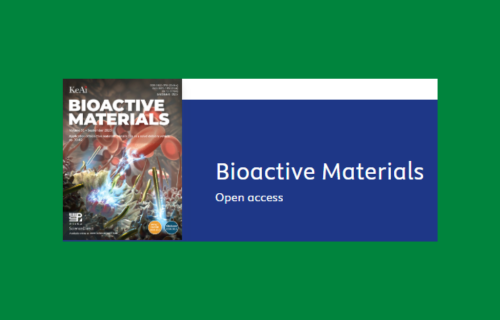New research demonstrates strong potential for improved functional recovery following spinal cord injury
Wednesday, 20 August, 2025
Share

Congratulations to recent PhD graduate, Ciara Walsh, who has had an original research paper accepted in Bioactive Materials. Ciara was part of Assistant Professor Dearbhaile Dooley’s lab. The paper is titled ‘Localised delivery of interleukin-13 from a PLGA microparticle embedded GelMA hydrogel improves functional and histopathological recovery in a mouse contusion spinal cord injury model’.
The study presents a safe, effective, and translatable strategy for localised cytokine delivery, demonstrating strong potential for immunomodulation and improved functional recovery following spinal cord injury (SCI).
Highlights
- HGIL13 is an injectable delivery system consisting of IL-13/PLGA microparticles in a GelMA hydrogel.
- HGIL13 releases IL-13 for up to 6 weeks and retains its bioactivity in vitro.
- HGIL13 improves functional and histopathological recovery in a mouse contusion SCI model.
Abstract
Spinal cord injury (SCI) is a severe neurological condition with limited regenerative capacity and no effective curative treatments. Interleukin-13 (IL-13), an immunomodulatory cytokine, has shown therapeutic potential by promoting alternative immune activation and improving recovery after SCI in mice. However, cell-based IL-13 delivery is hindered by poor graft survival and limited localisation at the injury site. Here, we developed an injectable hydrogel-based delivery system (HGIL13) composed of IL-13-loaded poly(lactic-co-glycolic acid) (PLGA) microparticles embedded in a photocrosslinkable gelatin methacrylate (GelMA) matrix, enabling sustained and localised IL-13 release. HGIL13 achieved IL-13 release for up to six weeks and significantly reduced lipopolysaccharide (LPS)-induced inflammation in BV2 microglia in vitro. In a mouse contusion SCI model, HGIL13 enhanced functional recovery, reduced lesion volume, and decreased demyelinated area. Using the HexbtdTomato mouse we show that HGIL13 modulated the neuroimmune response by decreasing resident microglia density, downregulating CD86 expression, and upregulating Arginase-1 in both microglia and infiltrating monocyte-derived macrophages. RT-qPCR and RNA-seq analyses confirmed sustained immunomodulation over 28 days and indicated early reduction of activated microglia at 7 days post-injury as a key therapeutic mechanism. This study presents a safe, effective, and translatable strategy for localised cytokine delivery, demonstrating strong potential for immunomodulation and improved functional recovery following SCI.
Discussion
The secondary neuroinflammatory response after SCI remains a formidable challenge and controlled delivery of immunomodulatory agents presents a desirable therapeutic strategy for regeneration. Our study addresses this therapeutic need by designing a hybrid biomaterial system, integrating PLGA microparticles within a GelMA hydrogel matrix, tailored for the sustained release of IL-13 in a mouse contusion SCI model. We have shown that the HGIL13 delivery system significantly improves functional and histopathological recovery over 28 days, demonstrating the benefits of a biomaterial-based delivery system for sustained and localised IL-13 delivery in SCI.
Open access publication link: (opens in a new window)https://www.sciencedirect.com/science/article/pii/S2452199X25003111